OLIVE OIL FROM SPAIN – HALIBUT SOUS VIDE IN HERBY EXTRA VIRGIN OLIVE OIL FROM SPAIN
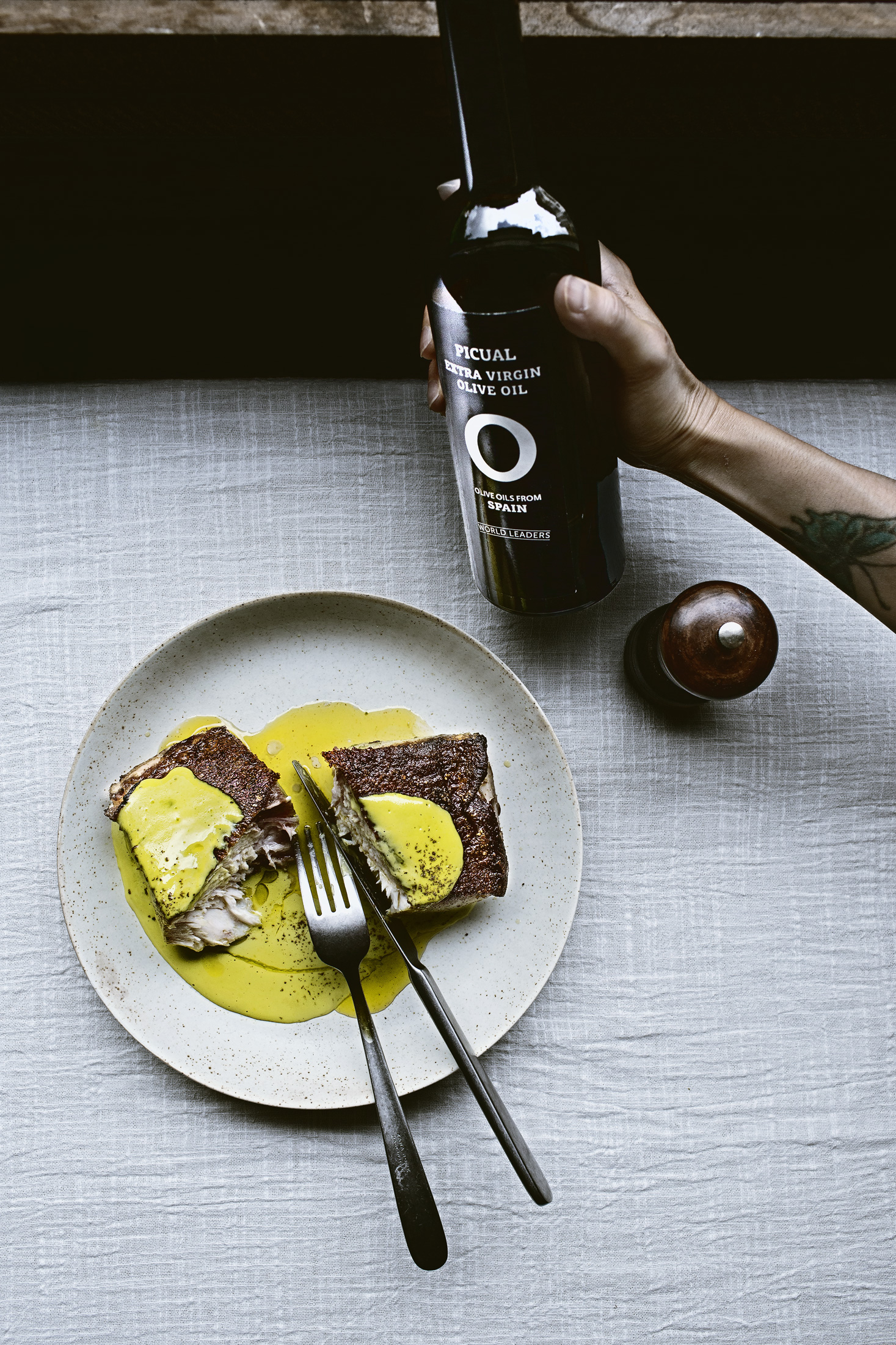
FIERCELY GREEN, GRASSY EXTRA VIRGIN PICUAL OLIVE OIL WITH ALMOST A BITE TO THE TIP OF THE TONGUE, THAT IS EXTRACTED AFTER IT’S BLENDED WITH GREEN CHILI, LIME ZEST, MAKRUT LIM ELEAES, LEMONGRASS AND GINGER, GATHERED AT THE BOTTOM OF A PORCELAIN BOWL LIKE AN EMERAL LAKE OF FLAVORS AND WELL INTENTIONS.
Sponsored.
There’s a Chinese saying that goes, “Wisdom resembles stupidity.” If I didn’t know any better, I would’ve thought it came from Spain.
Spain is, of course, well known as a pioneer for the consistently complicated, decidedly not-stupid molecular cuisines that went on to sweep the rest of the world. But, in my short yet nonetheless life-changing trip to Madrid a few years ago, that wasn’t what I had taken away from it. What had really stricken me, left a mark, drilled a hole in my perhaps unsophisticated heart, were the traditional, sometimes almost dumbfounded and simplistic everyday-foods from Spain that surprised me. A few slices of jamón and nothing else in between a crusty baguette. An omelet cooked with sliced potatoes. A tomato rubbed against toasted bread. Fried peppers. Things that, on the surface, aren’t even trying. But if you’re not careful, they might just be enough reasons for you to leave everything behind and move to Spain.
Of all the understated yet remarkable, seemingly careless but in fact highly meticulous morsels of Spanish foods, something, perhaps the most unassuming-sounding of it all, stands out near and dear to my heart. Canned seafood.
This is by no means the dusty can of sardines in watered down tomato sauce that you ate in one regrettable night of desperation and bad life choices. We are talking top-of-the-line quality oceanic delicacies: mussels, octopus, baby eels, squids, razor clams, attentively packed with flavored or unflavored extra virgin olive oil inside perfectly sized cans where they are cooked, fused, aged even, bilaterally transforming into something that is infinitely more than the sum of its parts. With sufficient amount of time that they lay dormant together, the extra virgin olive oil from spain, viscous and fruity, exchanges flavors and even textures with the subjects that it submerges, making the seafood luscious and silky.
So it goes without saying that the minute I was asked to formulate a recipe featuring Olive Oils from Spain, that was where my mind immediately parked. Well, sort of.
For obvious reasons, running a seafood canning factory inside a home kitchen presents its obstacles. But what we can do is mimick the process of cooking seafood submerged in extra virgin olive oil inside a vacuum state, aka, sous vide. Before I lose your attention, I’d like to point out that, quite the contrary from general beliefs, when it comes to sous vide, A) you do not need a vacuum machine, nor a sous vide machine to sous vide at home, and B) the process is actually significantly simpler and easier than most of the other stuff you cook home. Say pancakes. I, personally, rather do five sous vide meals than one batch of pancakes.
Because look, you stuff your subjects into a zip-lock bag. Close the bag while eliminating as much air inside as humanly possible. Dunk the bag into a large pot of warm water that mostly sustains itself at a constant temperature over the lowest flame setting. And, well, that’s pretty much it. Fifty minutes later, the unimpressive thing you walked away from without doing much else has turned into something that is now surreally fantastic. It’s a method I often deploy against ingredients that are persistently keen on ending up as a pile of cardboards or wood chips, say chicken breasts and fish.
So, tell me how this sounds. On one side, we have a fiercely green, grassy extra virgin Picual olive oil from Spain, with almost a bite to the tip of the tongue, that is further extracted after it’s blended with green chili, scallions, lime zest, makrut lime leaves, lemongrass, ginger and cilantro, gathered at the bottom of a porcelain bowl like an emerald lake of flavors and well intentions. On the other, we have a steak-like hunk of fatty halibut fillet.
Let the fateful merger of these two enterprises collide, settle, left undisturbed inside an airless bag, then send them off into a physical transformation inside a warm, silent, almost meditative bath. The translucent flesh of the halibut whitens and tightens to the perfectly calculated and controlled state of being opulent and supple, where a small amount of its savory juice seeps into the Spanish olive oil, each releasing and absorbing the essence of the other, born anew.
At this point the duo is as ready to be served as any. But I couldn’t resist to impose a little element of crispiness on the fish by finishing it in a hot skillet, and to emulsify the olive oil and liquid with yolk and garlics and turning it into a loose, mayonnaise-like sauce.
For more information on Olives Oils from Spain, please visit www.oliveoilsfromspain.org to learn about their quality olive oils.
Ingredients
- Two thick halibut fillets (each about 0.75 lb/350 grams), or other similar type fish (see note *)
- 1 tbsp fine sea salt
- 1 tsp ground white pepper
- 1 cup extra virgin, Olive Oil from Spain (Picual)
- 6~7 kaffir/makrut lime leaves
- 2 scallions, roughly cut
- 1 small handful of fresh cilantro (see note **)
- 1~2 green jalapenos (depending on your preferred heat level), roughly cut
- 1 lemongrass, roughly cut
- 1 small shallot, peeled and roughly cut
- 1 tbsp ginger, peeled
- Zest from 2 small Asian lime, or 1 regular lime
- 3/4 tsp fine sea salt
- 1 large yolk
- 2 cloves of garlics, peeled
- 2 tsp lime juice
- 1/2 cup herby extra virgin olive oil from above
- sea salt and light brown sugar to season
Instructions
- PREPARE THE FISH: Gently rub fine sea salt and ground white pepper evenly over the fish and let marinate for 40 minutes.
- MAKE HERBY EXTRA VIRGIN OLIVE OIL: In a blender, add extra virgin olive oil, kaffir/makrut lime leaves, scallions, cilantro, green jalapenos, lemongrass, shallot, ginger, lime zest and sea salt. Blend until smoothly pureed. Transfer the mixture into a large cheese-cloth that is set over a large bowl, then gather the cloth around the top and squeeze out the liquid into the large bowl with your hand. Once all the liquid/green oil is extracted, discard the solid.
- BAG AND SOUS VIDE THE FISH: After marinating, if there’s any liquid that were emitted from the fish, drain and discard. Transfer each fillet into a heavy-duty zip-lock bag, and equally divide the herby extra virgin olive oil into each bag. Zip the bag until a small gap remains, and gently press/squeeze out as much air inside the bag through this gap as you can, then seal the bag completely. Let the fish sit in the fridge for at least two hours, or as early as the night before.
- Insert a thermometer into a large pot of water (DO NOT use pots like cast-iron that retains too much heat), then set over high heat to bring the water to 130 F/55 C. Gently place the fish inside the bag into the warm water. Only the fish has to be fully submerged, not the entire bag. Once the temperature comes back to 130 F/55 C, lower the heat down to the LOWEST possible setting. Set the timer for 45 minutes.
- Come back every 5~10 minutes or so to gentle dangle the bags to encourage water circulation, and also to check on the temperature. My experience is that a large pot of water should be able to retain at a constant 130 F/55 Cover the lowest flame. But if you notice that your water is over-heating, especially near the end of the cooking process, simply add some iced water to bring it down. After 45 minutes, remove the bags from the water. Drain the liquid/oil from the bag into a measuring cup, leaving the fish inside the bag to stay moist.
- MAKE GREEN AIOLI: Now, this liquid is a great sauce as is, but I like to turn it into aioli. In a small blender, food processor or with an immersion blender, blend yolk, garlics and lime juice until smooth. Slowly drizzle in 1/2 cup of the herby olive oil in until an emulsion forms (if some liquid on the bottom of the measure cup is seeping through, don’t worry about it). You should have something like a loose mayonnaise. Season with sea salt and small pinch of sugar, set aside.
- TO SERVE: Whether your fish is skin-on or skinless, l like to crisp up at least 1 side of the fish before serving. In a non-stick skillet, add more extra virgin olive oil to generously coat the bottom. Cook the fish with the skin-side down over medium heat, tilting and repositioning the fish so all corners are taken care of, until the skin is crispy and browned. Serve the fish with a generous pouring of green aioli, more extra virgin olive oil if in doubt, and serve immediately with a few turns of black pepper.
Notes
* Choose fishes that have a fatty but firm flesh, with the thickest part that is at least 1 1/2”~2” thick. This would mean the mid-section on large fishes such as halibut, large striped bass, cod, sword fish, salmon and etc. “Fillet” would mean that the meat is removed from the central spine and major bones (whereas a “steak” will include the bones). You can choose between skin-on or skinless, depending on your preference.
** If you can’t stand cilantro, note that you won’t really be able to taste a strong cilantro presence in this recipe. But if you want, you can substitute cilantro with tarragon, basil, or other types of green leafy herbs you prefer.

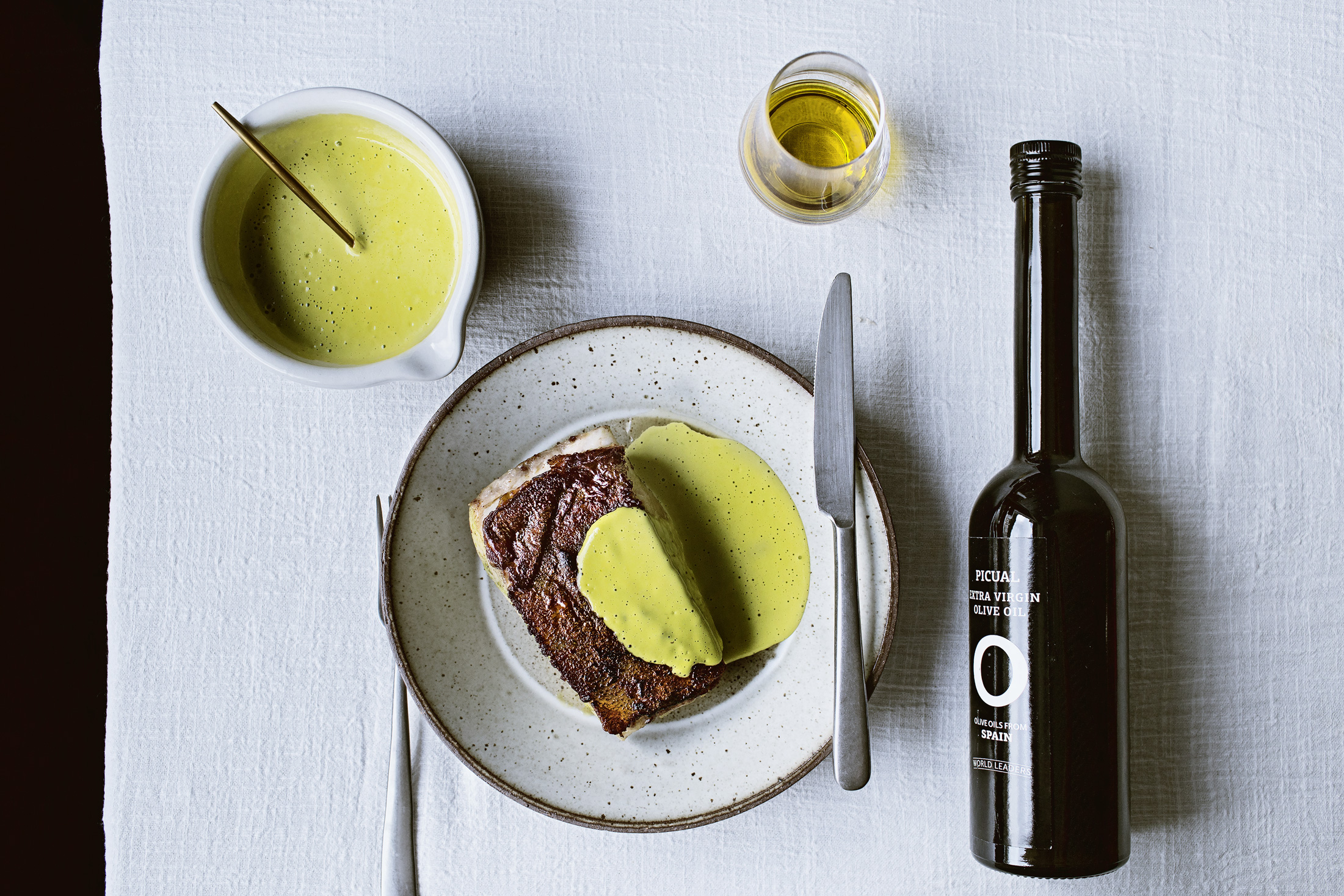
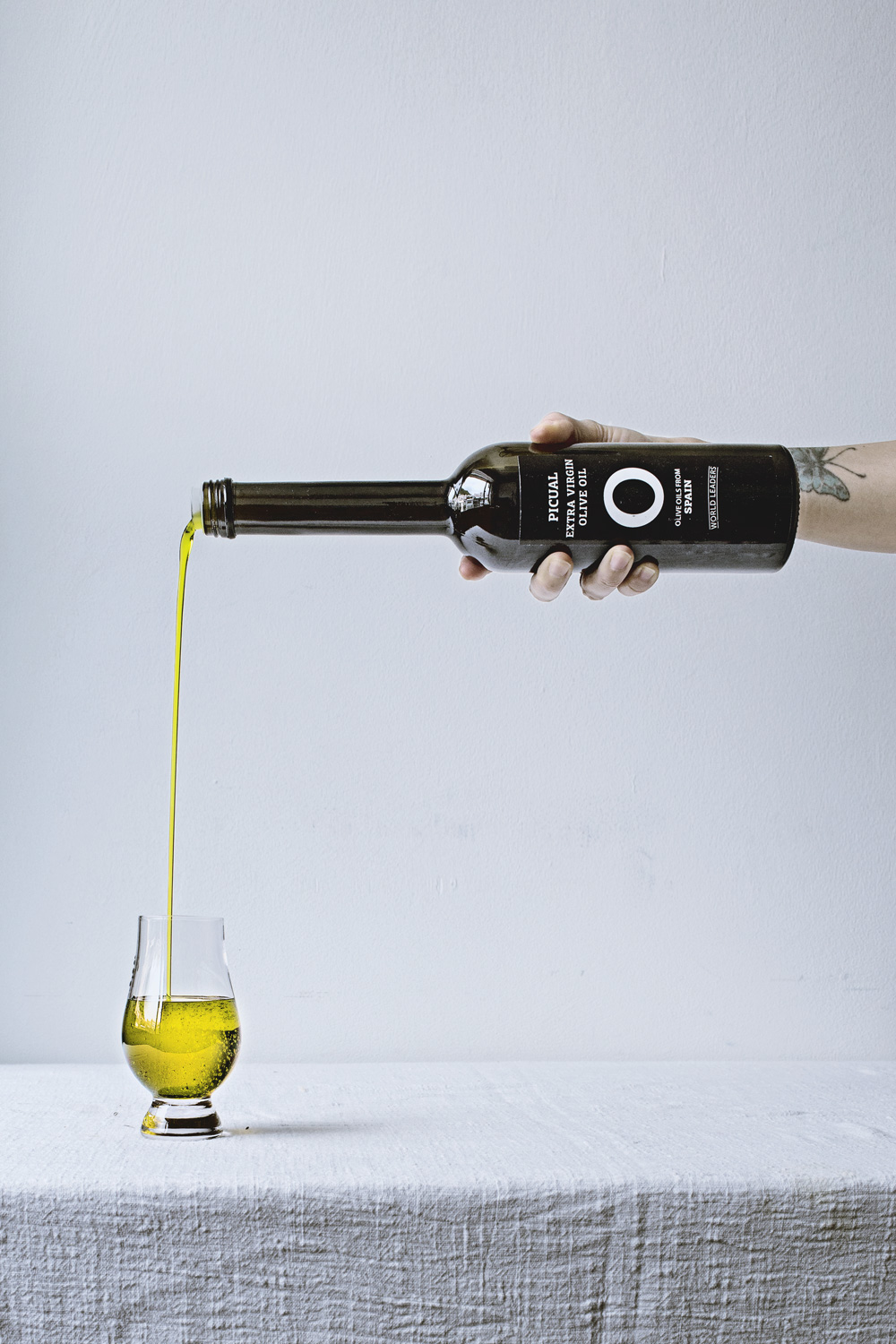
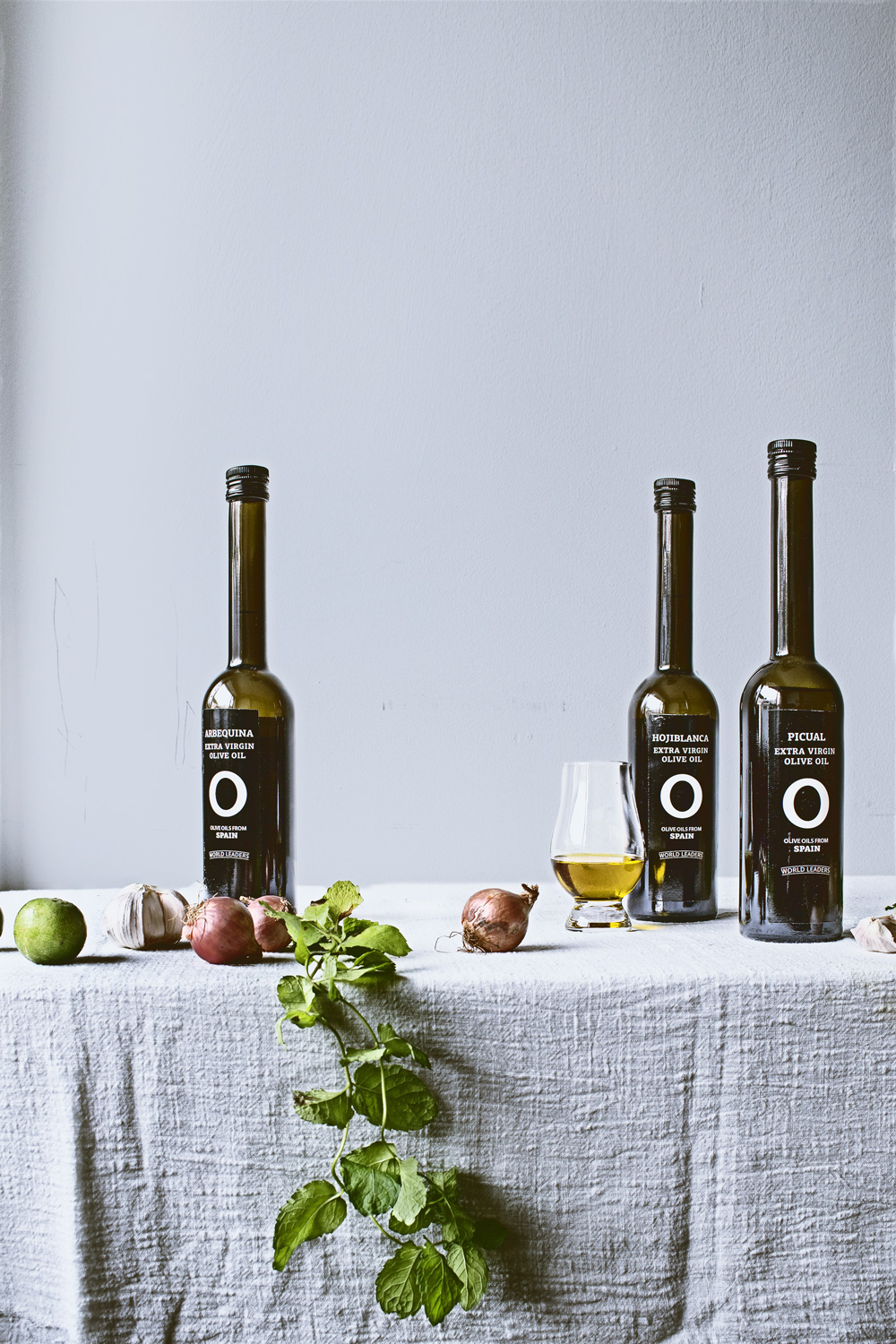
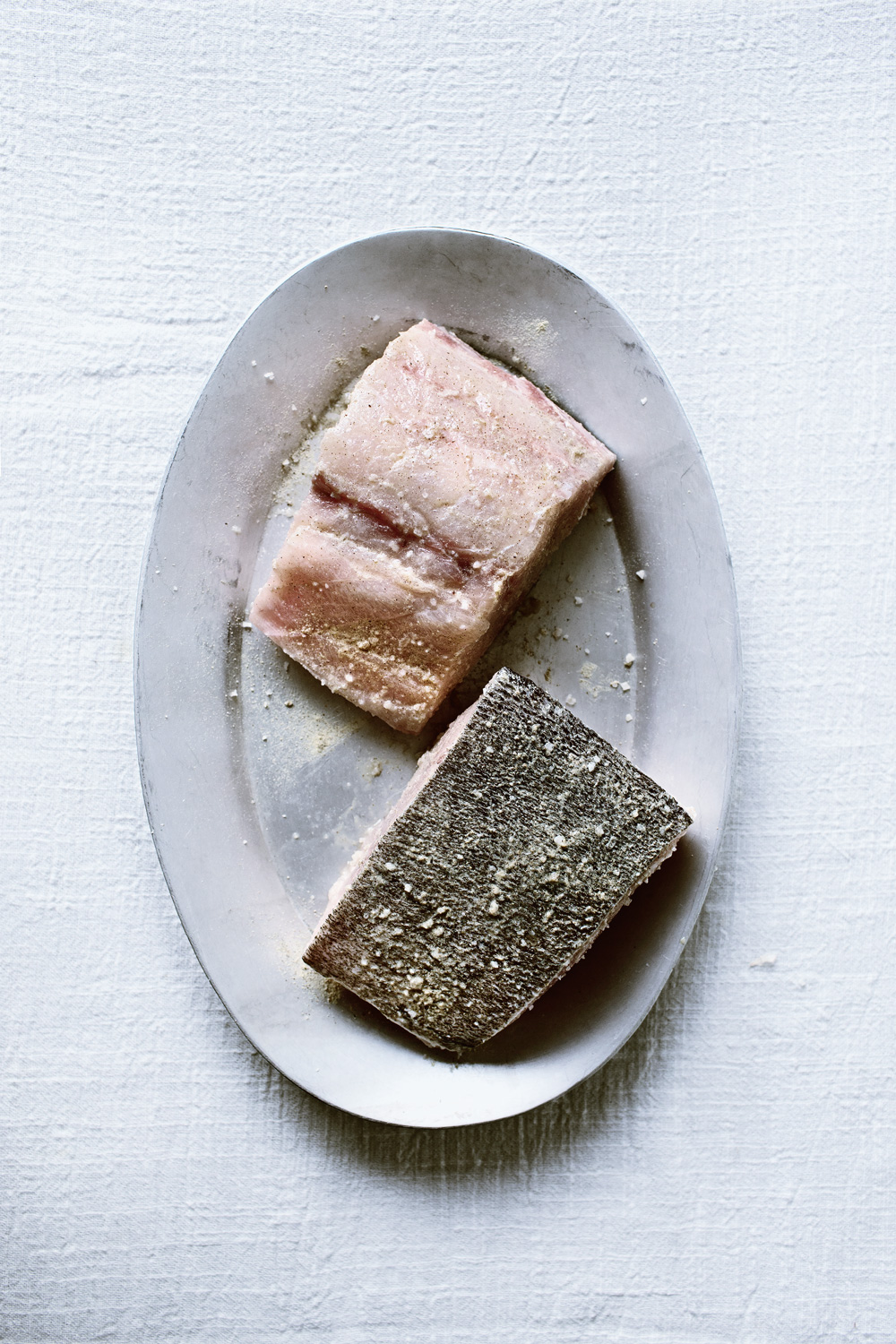
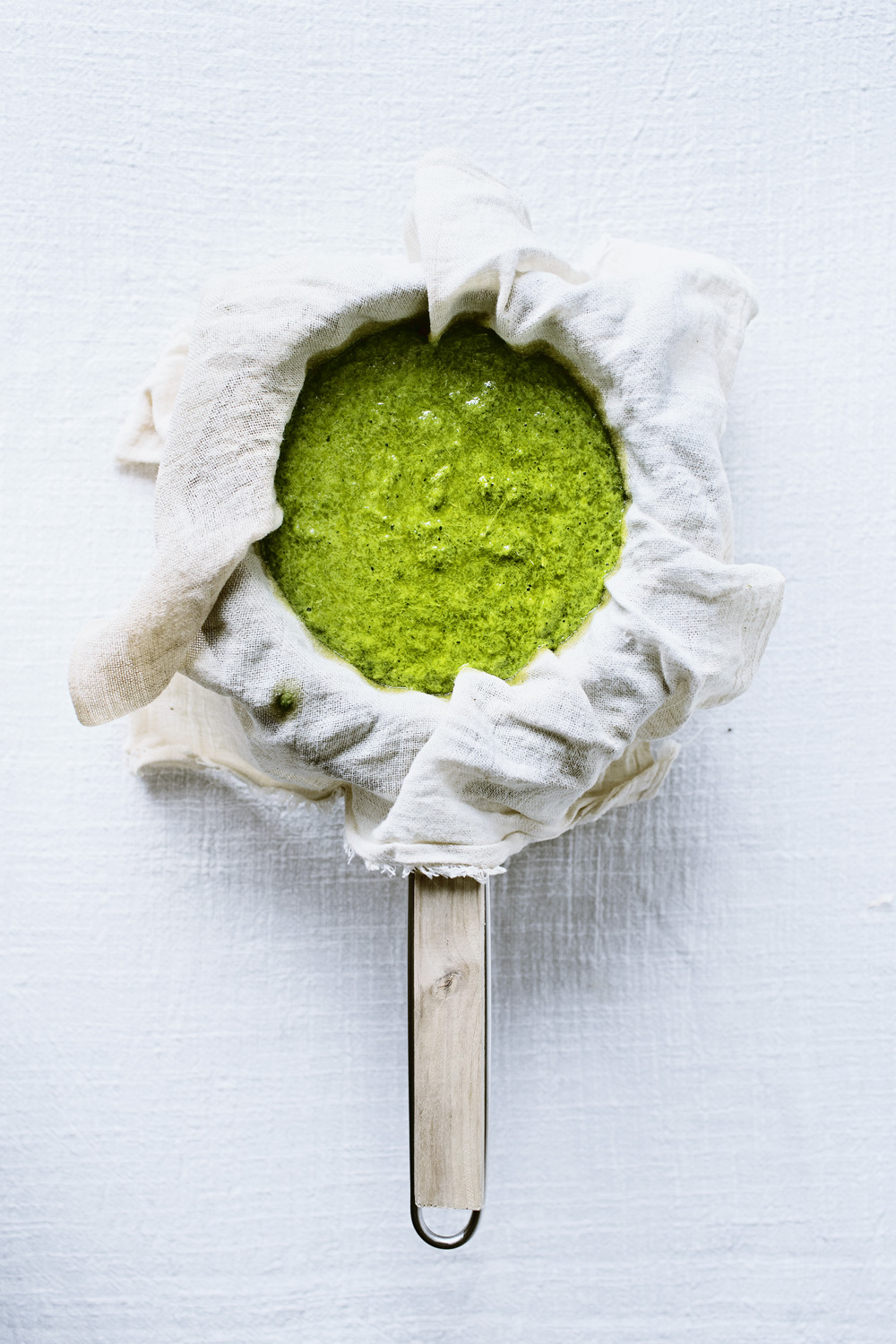
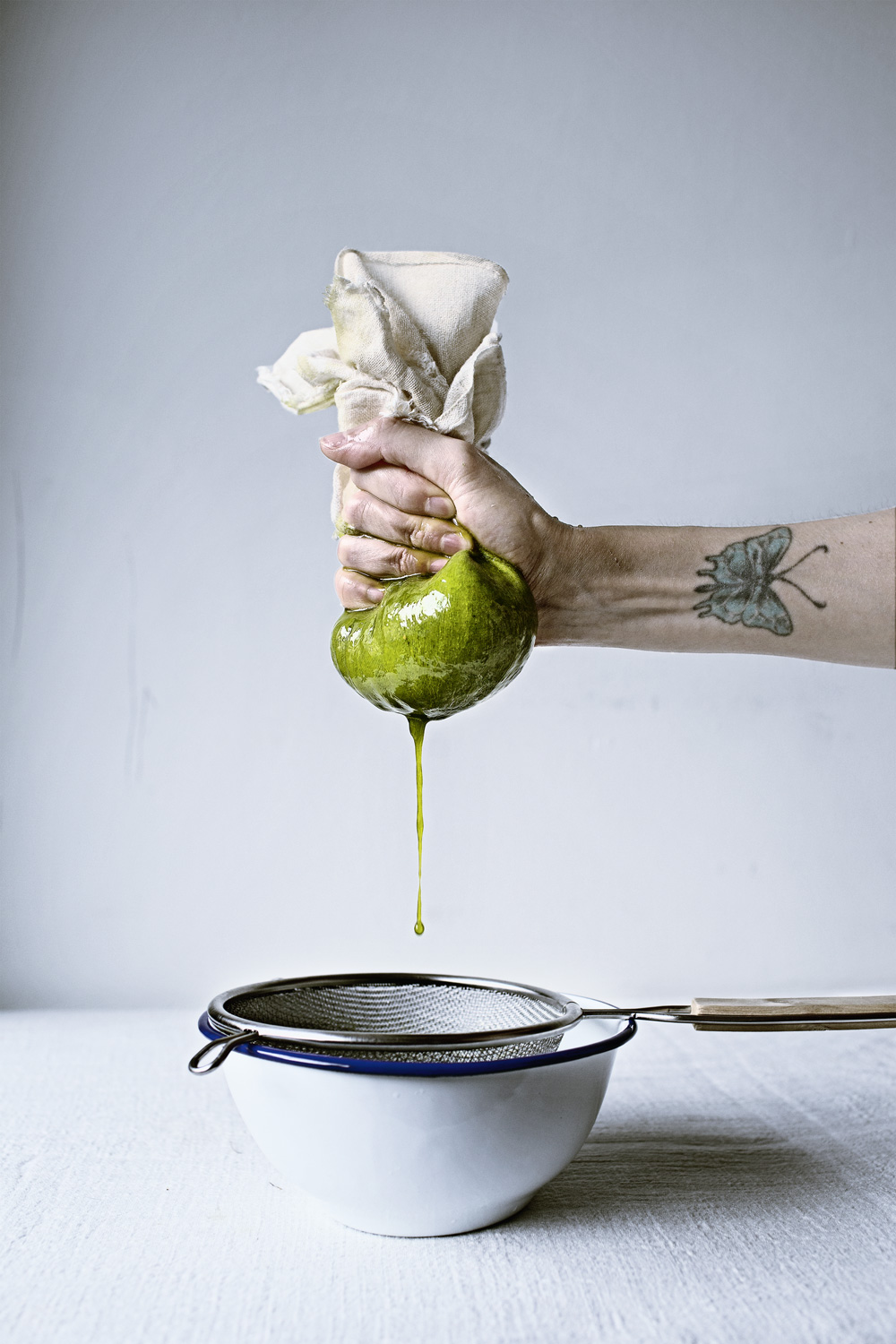
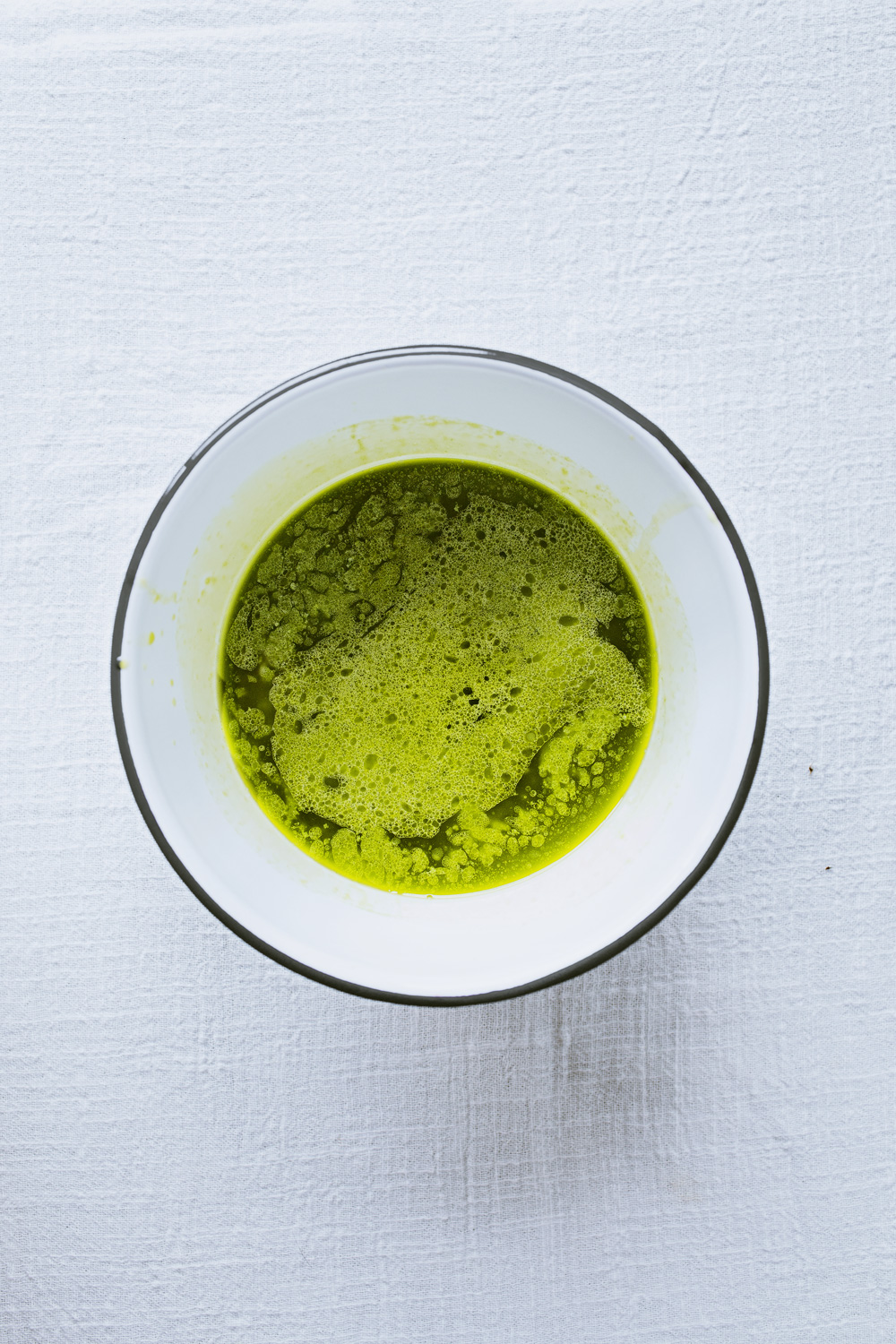
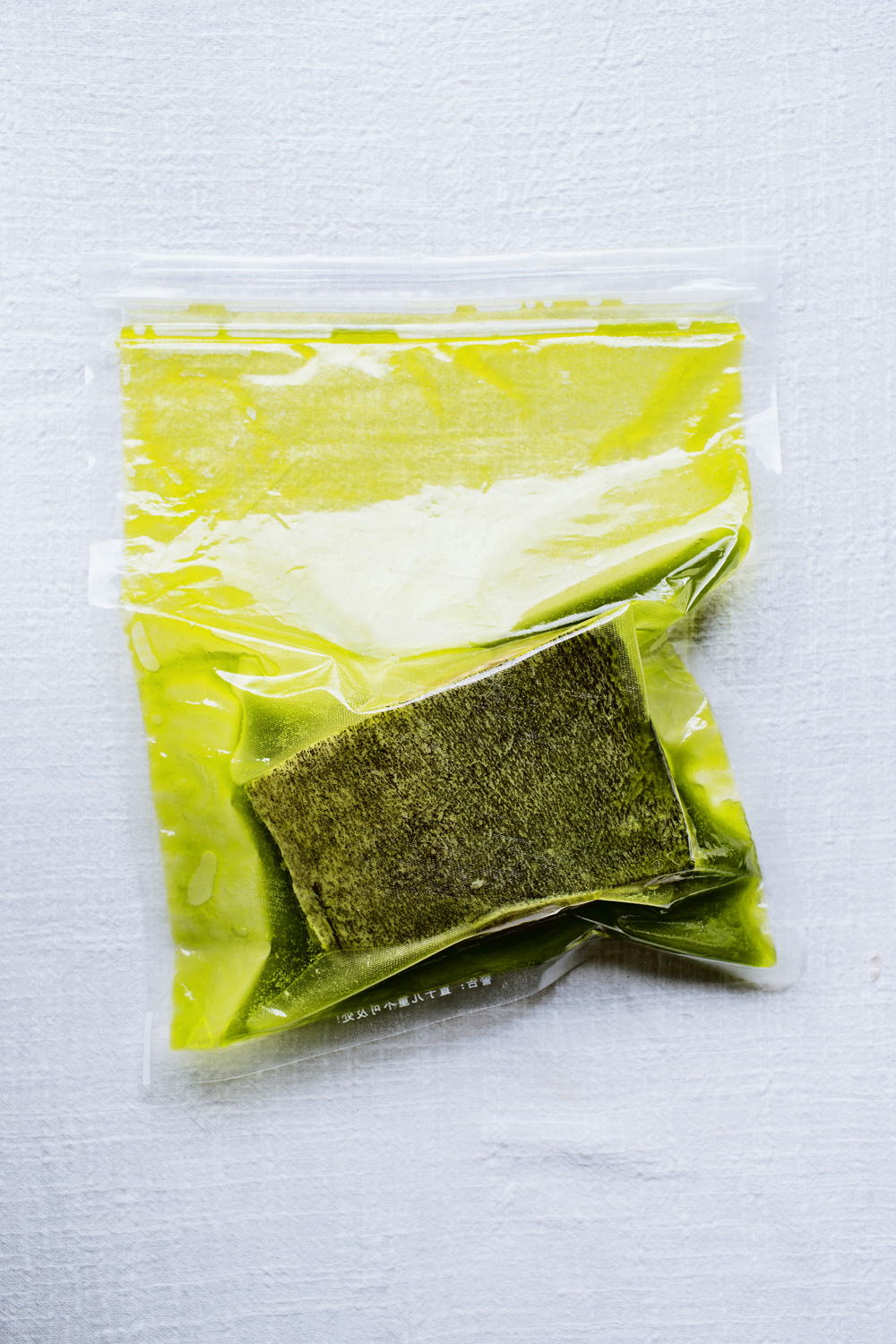
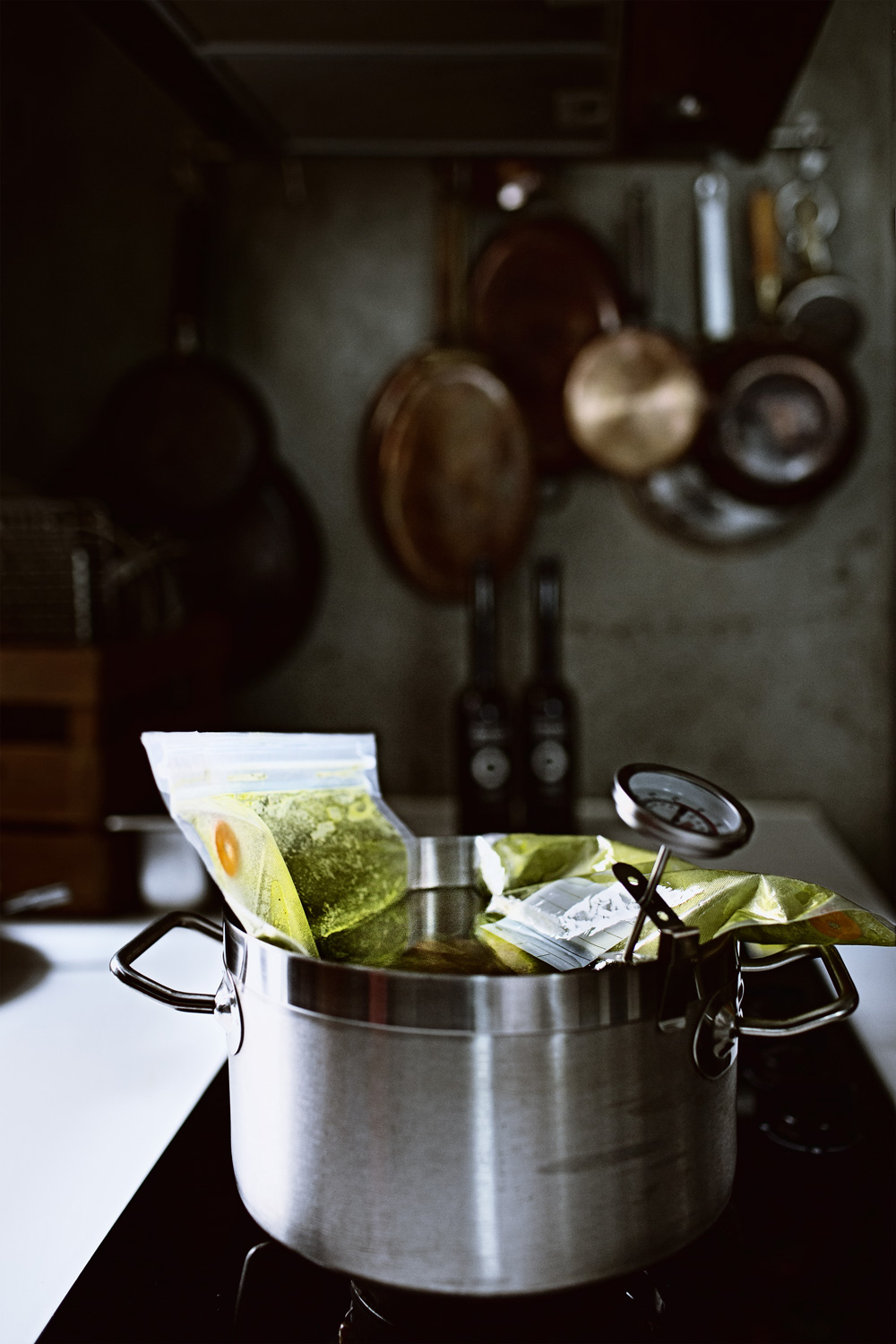
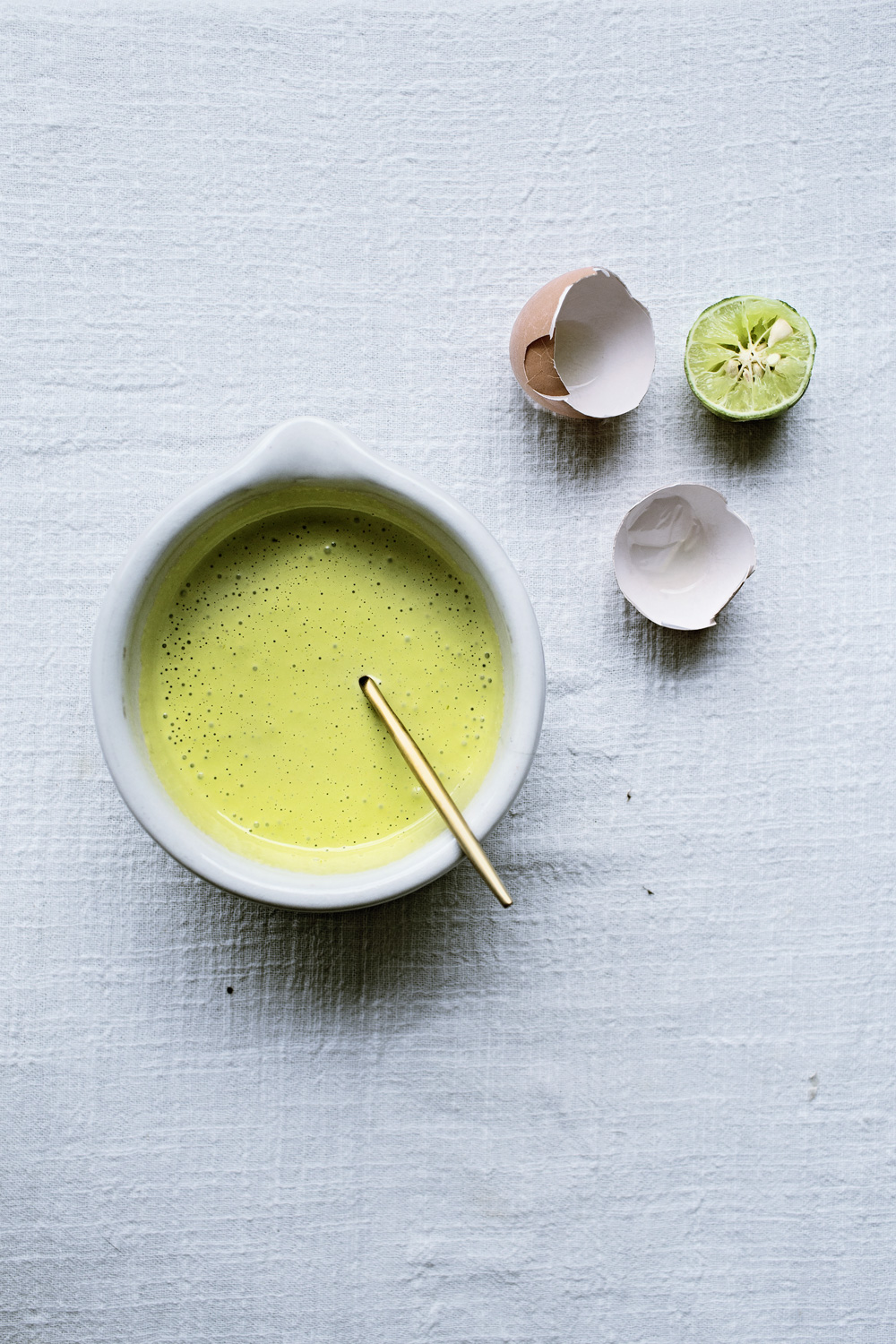
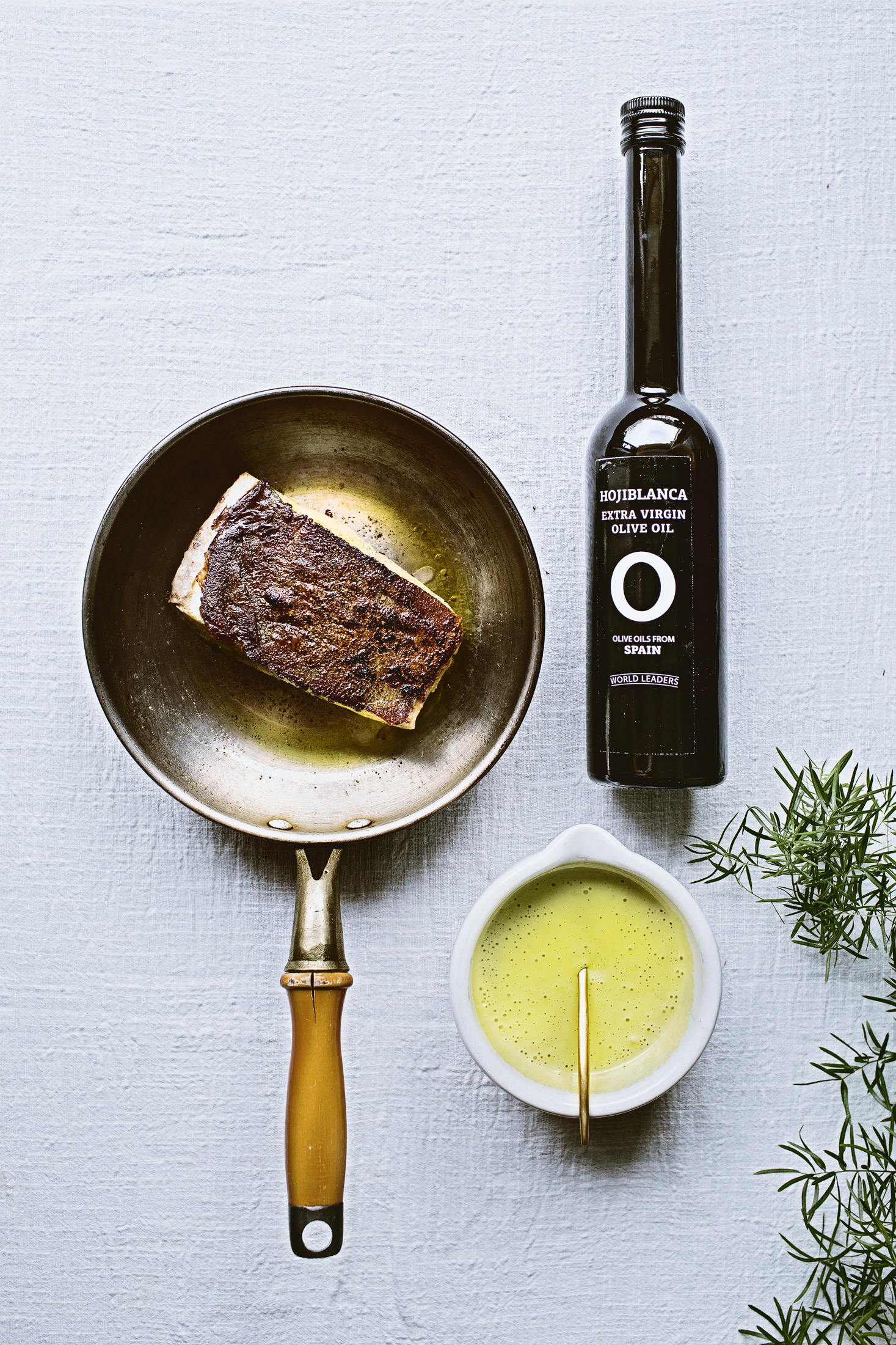

george tsaklidis
07.14.2018at5:26 PMI know it’s been a while but then again, does it really matter ?! LOL
Beautifully done and I know what you mean, both spanish & greek quality olive oils (that i usually get directly from relatives with olive groves) have a deep green bite to them that actually burn the back of your throat … LOVE IT !
Keep on continuing with the quality & sponsored posts (it’s about time some talented bloggers get some material support for all their efforts) !
p.s.: it’s funny how our followers who see some of us bloggers as “purists” rarely appreciate “sponsored” posts and usually remain quiet when they’re published; it seems they prefer our efforts to be more “sacrificial” or directly customised to their own desires & needs, a kind of “this is just for you” type of post. We do it for ourselves in the beginning, then hope others have that spark ignited in them so they try stuff out too (that’s for them) and in the end, ideally it would be nice to actually “live & profit” from it (as a form of support to keep on grinding it all out for ourselves & for others too, that’s where the perfect balance is) … like my friend once said “Georgie, there are 2 kinds of people in the world, there’s THEM & there’s US”, that always cracks me up ! … :)
mandy@ladyandpups
07.15.2018at2:43 AMGeorge, hahaha I so feel what you’re saying! Maybe next time we should not mention that it is sponsored, because I wouldn’t advocate for a product or recipe that I wouldn’t like anyways. So whether I get paid for it or not, is kind of irrelevant in this context. Anyways, you’ve always been such a dear friend. Happy to hear from you as always :)
george tsaklidis
07.17.2018at6:07 PMaaah you know, “friendship” is so over-rated … whatever ! … but ALLIES are even better ! LOL :)
grace
07.17.2018at7:48 AMI prefer sponsored posts to just say so – as long as the recipe is true to you, and this one sure seems to be – then who cares? You deserve to be paid for providing recipes of this quality and the challenge of creating a recipe for a specific product is super fun, obviously. Here’s to you doing you!
PS: wonder how this would be with black garlic aioli ala Alexander’s sliders with black garlic aioli (masterchef junior s1 ep 2, fyi!). Will try both!
kimithy
09.07.2018at11:30 PMSame – happy to see a sponsored post here, actually! This is the kind I actually enjoy.
kimithy
09.07.2018at11:28 PMOh wow, the herby olive oil sounds AMAZING – and doable even for me, a lazyass cook. I’ve been thinking about trying an infused olive oil but hadn’t thought to blend it all together & strain right away. Thanks so much for this!